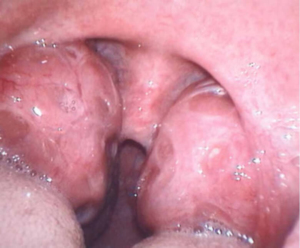Tonsils and Tonsillectomy
What are the tonsils
The tonsils are a part of the immune system, which is the mechanism of fighting against external invaders, such as bacteria and viruses. Up to the age of 4, it is believed that they play an important role in building the immune «memory system», which helps the child’s defence mechanism to get familiar with the various micro-organisms in the environment. From 4 to 12 years their contribution gradually decreases. In adulthood, we believe that the tonsils do not have a significant role in immunity.

Acute and Chronic Tonsillitis
Often, the tonsils are infected by viruses or bacteria, which cause an acute inflammation known as acute tonsillitis. This is characterized by purulent smear on the throat, fever and pain. If medical treatment fails to adequately cure the condition and the infectious material is not eradicated from the tonsilar tissue, then chronic tonsillitis may develop.
Chronic Tonsillitis usually causes enlargement of the tonsils (image) and recurrent infectious episodes. Apart from the nuisance and long-lasting discomfort, it can be complicated by severe rheumatic damage to the heart and kidneys. In chronic tonsillitis, removal of the tonsils may be indicated.
Tonsillectomy
When the problems caused by the tonsils are more than the benefit from their presence, the surgeon recommends removal. The decision is usually based on history, i.e. on the number and severity of the episodes of tonsil infections during a year. Sometimes, the size of the tonsils is so large, that they intrude feeding or breathing, and they cause snoring, or even sleep apnea. In these cases, removal is also indicated.
Tonsillectomy is the commonest operation in ENT surgery. Nowadays it is done under general anaesthesia, and lasts approximately half hour. The patient is discharged from hospital on the next day, on oral analgesics and instructions for special diet. The healing is almost complete in two weeks, but we recommend no physical strain for 3 weeks in total, to avoid postoperative bleeding.
This website aims at providing simplified scientific information and not medical advice on specific conditions or individual cases. In this respect, it cannot replace the consultation and documented opinion of a specialist physician.
